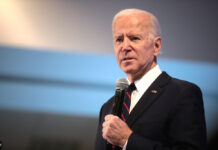The key issue many of the 2020 Democratic candidates are focusing on currently is the student loan debt crisis. College debt now exceeds $1.5 trillion, which is triple what it was in 2006, and many bills have been proposed in order to help the situation. A majority of the candidates have previously supported acts to remedy the situation whether its Bernie Sanders’ College for All Act or Brian Schatz’s Debt-Free College Act, however, candidates are now in a position where they have to separate themselves from each other with primaries coming soon. Although they are all talking about the same thing each candidate slightly differs on their position on how to address it.
-
Kamala Harris: Plans to go after private colleges that prey on students with promises of getting a good job when they graduate, but only end up massive debt. Seeing the issue as one of the bigger issues facing the country she believes the way to address is to make college debt-free and putting a system in place where students can refinance their debt.
-
Pete Buttigieg: Knowing the debt issue well personally, his husband was left with a lot after finishing his master’s degree and becoming a teacher. His solution is to make the Public Service Loan program more accessible as well as increase the cap for the Teacher Loan Forgiveness program.
-
Amy Klobuchar: Has not signed onto either the College for All Act of the Debt-Free College for All Act, which separates herself from the other presidential hopefuls. She believes the solution is extending and expanding federal student aid given though Pell grants and providing free two-year community colleges.
-
Kirsten Gillibrand: Vows if elected to immediately allow borrowers to refinance loans to a four percent interest rate. She has long been against the absurdly high interest rates on college loans even introducing her Federal Student Loan Refinancing Act in 2013.
-
Beto O’Rourke: Proposes tuition free community colleges, as well as favoring making public colleges and universities free.
-
Corey Booker: Believes he can offer a long-term solution to the problem by establishing a savings account with $1,000 for every child born in the US, and up to an additional $2,000 depending on family income. The funds would become available for use for tuition payments or home ownership when they turn 18.
-
Bernie Sanders: Since the last election has made this issue the centerpiece of his campaign. His College for All Act would create a partnership with states to fund the free education, and he has also been pushing to lower the interest rate and enabling students to refinance their existing loans.
-
Elizabeth Warren: Has supported the Debt-Free College for All Act, introduced the Reduce Student Debt Act, and has been seeking to enable students to refinance their loan. She also plans to include some method of loan forgiveness in her 2020 plan on the matter.
-
Julian Castro: Wants to ensure students learn important trade skills. Therefore, he is focusing his plans around community colleges and apprenticeship programs rather than four-year institutions. “We’ll work to make the first two years of college, a certification program or an apprenticeship accessible and affordable, so millions more people get the skills they need to get a good job without drowning in debt.”
-
Tulsi Gabbard: Co-sponsored the House version of Sander’s College for All Act. Also a co-sponsor of HELP for Students and Parents Act, that gives tax credits to businesses that help pay off their employees student debt.
-
John Delaney: Wants to expand public education. This is by adding an extra two years onto the current kindergarten through grade 12 system. This expansion would make two years of community college or technical training part of public education.
-
Jay Inslee: The current Washington governor has unveiled a plan to deal with the cost of higher education in his home state. The College Promise grant will give over 93,000 students financial aid by 2021.
-
Andrew Yang: Wants to bring down costs by changing the administrator to student ratio from 1 to 21 to 1 to 30, noting that in 1970 it was 1 to 50. He also wants universities receiving endowments over $30 billion to contribute 1 percent to establish a new university in Ohio.
-
Wayne Messam: Says he will push for “national student loan forgiveness.” He plans to have the government take over responsibility for loans, which would be funded by repealing the Trump tax cuts.











